The China Navigation Company
Please
Note: Firefox and some other search engines are
not suitable – Use “Internet Explorer” for this page to load perfectly!
Click the logo above
to reach the ssMaritime FrontPage for News Updates & “Ship of the
Month”
Maritime Historian, Cruise‘n’Ship Reviewer,
Author & Maritime Lecturer
Please Note: All ssMaritime and other related maritime/cruise sites
are 100% non-commercial and privately owned. Be assured that I am NOT
associated with any shipping or cruise companies or any travel/cruise agencies
or any other organisations! Although the author has been in the passenger
shipping industry since 1960, although is now retired but having completed
around 680 Classic Liners and Cargo-Passengers Ships
features I trust these will continue to provide classic ship enthusiasts
the information the are seeking, but above all a great deal of pleasure!
The
China Navigation Co, Ltd
MS Anking & MS Anshun

The China Navigation Company’s History in Short:
The China Navigation Company’s (CNCo)
and they have their origins in
Within a decade, CNCo had expanded its
operations up and down the
The 1960s and 70s also saw China Navigation
diversifying its scope of activities in two other very different directions.
The first was cruise operations, based in
The 1946/1947 Quartet of Ships:
By the late 1950’s The China Navigation Company (CNCo) was a popular shipping company, especially with Australian’s sailing between Melbourne, Sydney, Brisbane, Port Moresby, and Asia, be it for a line voyage or a circle cruise. By this time there were eight ships operating from 3,150-tons, accommodating with just 12 first class to the larger 7,472-ton ships offering 84 first class passengers, and each ship also had space for steerage or third class accommodations, which was mostly used for local inter island coastal traffic.
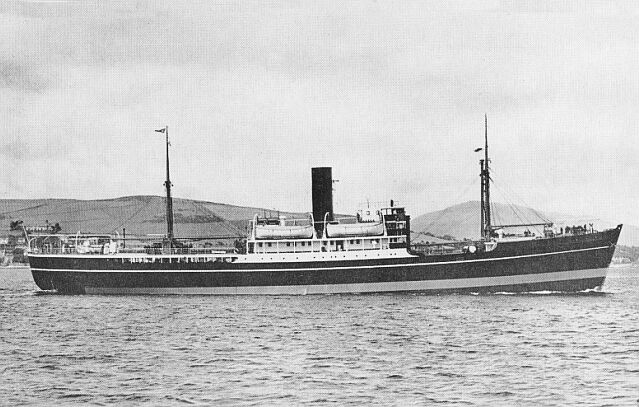
However, the 1947 pair, being the MS Shansi and Soochow externally looked quite different as they had a longer Bridge deck that extended as far aft as the mainmast, providing additional facilities for their passengers to the other ships. This quartet became very popular with passengers including the excellent style of service that was available, which was simply superb and it became obvious to the management that they proved to be inadequate and new and larger ships were needed with a larger passenger capacity, thus two new ships had been designed, which resulted in two superb ships being built, the MS Changsha and Taiyuan, which were true passenger-cargo liners in the true sense of the word, offering every possible facility!
The Building of the MS Ankin and Anshun:
With the aforementioned ships having proved to be very successful, the CNCo decided to build two new 6,000 tonners, able to accommodate a larger number of passengers. They would be able to accommodate up to 165 in two classes, as well as a large number of passengers in what was called “4th.class” or Steerage.
The Ankin was built by Scotts Shipbuilding
& Engineering Co of
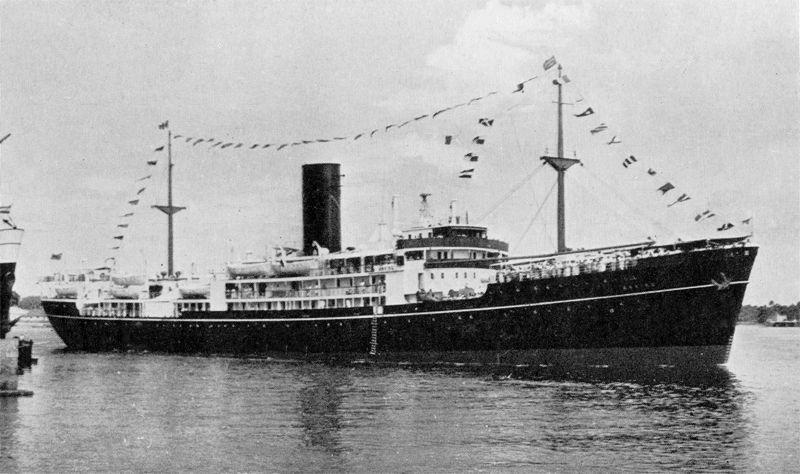
MS
Anking is seen here in the
Whilst the Anking was built in the
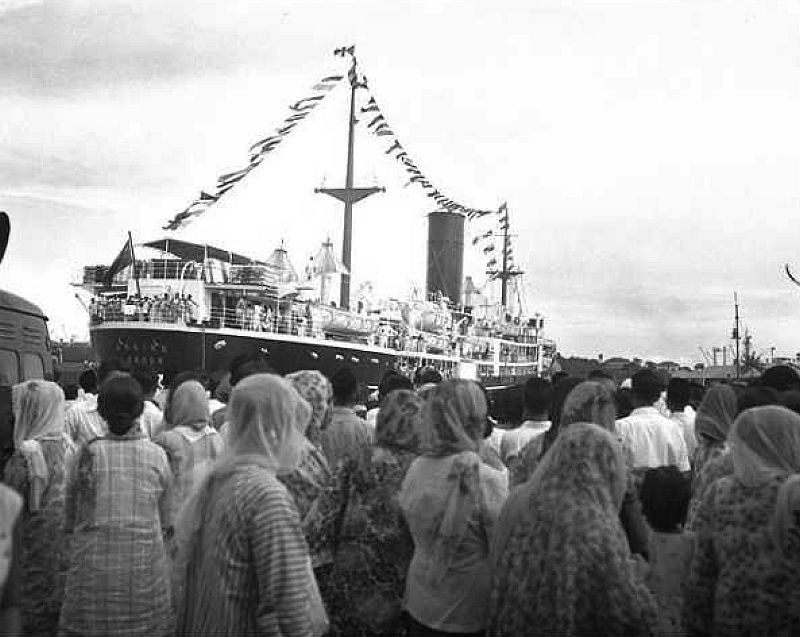
MS
Anshun is seen here departing
Provided by a
supporter, but unknown photographer – *Please see photo notes at bottom
of page
Ship Board Information:
First Class was quite comfortable for a total of 50 passengers, which were all located on the one deck, being A Deck, the lower open deck. Far forward is the First Class Lounge, although pleasant with gentle timber lining, light upholstery with comfortable seating of chairs and fixed wall sofas. Timer tables were topped with Formica and flooring covered in Korkoid. On the side of the lounge there were several writing desks as well as a book case on the other side. Amidships were all the First Class cabins, which were all two bedded very comfortable staterooms, but one of the odd features was that these rooms did not have a traditional cupboard with doors, instead there was just curtain in front. Although there was a larger dresser with plenty of drawers, a stool and a wicker cane chair and all rooms had a window. However, as it was for many ships in those days none of the cabins had private facilities, just a wash basin in each room, thus it was off to one of the well located and supplied bathrooms nearby. One deck above (Promenade Deck), directly above the First Class Lounge was the Dining Room, which again had timber clad walls and furnishings, the floor was covered in linoleum that had a pattern of a large square motif, over all it was a reasonably a pleasant room and somewhat larger than the lounge. In those days there was no such thing as air-Conditioning and the air cooling was provided by a “Phukah” fan forced ventilation system, with movable outlets in all cabins and venues. These could be regulated to provide more or less air and turn to the preferred direction. These plastic fittings can be seen in the photographs
No one would ever say that these ships were
luxurious, that could be better said of the 7,400 ton MS
Basic Ships Layout and Interior
Images

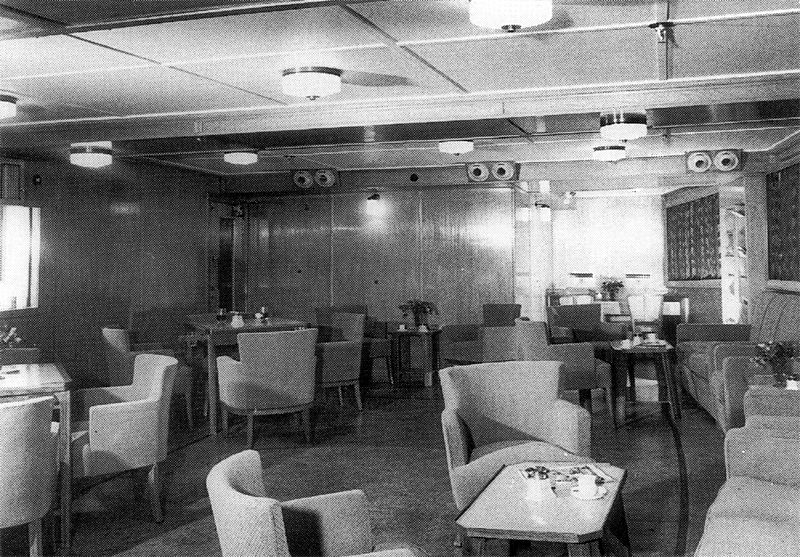
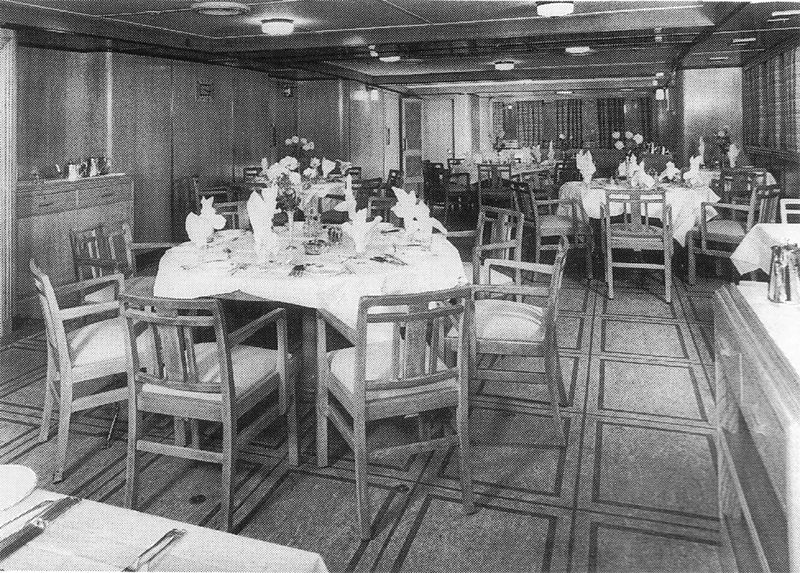
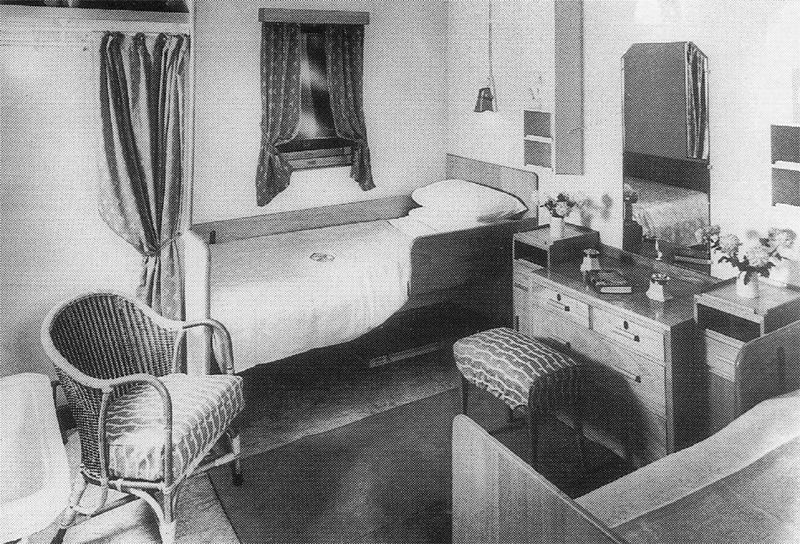
They also accommodated 116 Steerage Class passengers, their cabins which were mostly located on B Deck aft offered from six to ten berth cabins. They had a dinning room aft on A Deck and a Lounge up on Boat Deck. Whilst 4th.class passengers were located in the forward ‘tween decks and were provided with either portable beds, or were un-berthed, as they would sail between ports (a day voyage), or a longer voyage, depending on the sailing. The forward deck would be well covered with canvas providing ample protection from the sun.
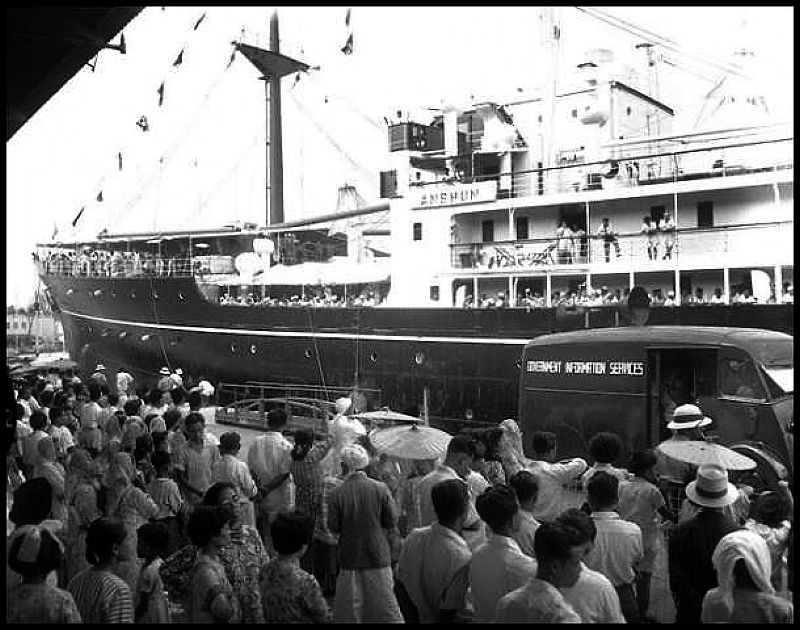
The
MS Anshun is seen at
Provided by a
supporter, but unknown photographer – *Please see photo notes at bottom
of page
History and Service Record:
Considering that the Anking and Anshun were
built especially for the emigrant trade between southern
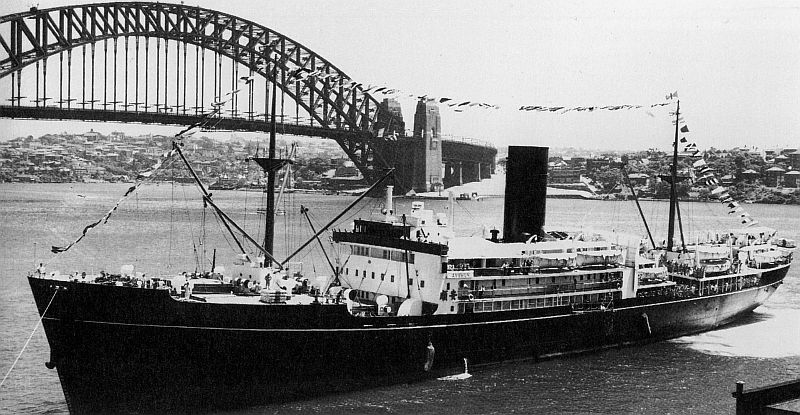
MS
Anshun is seen arriving in
This would continue until both ships were
transferred in 1953 to the pilgrim or the “Hajj” service operating
between
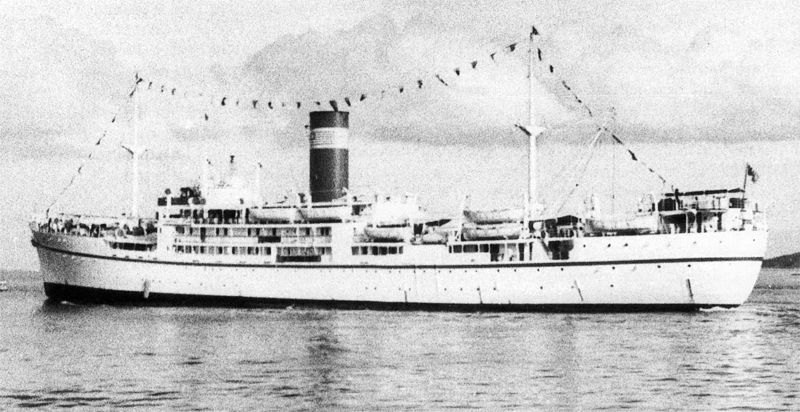
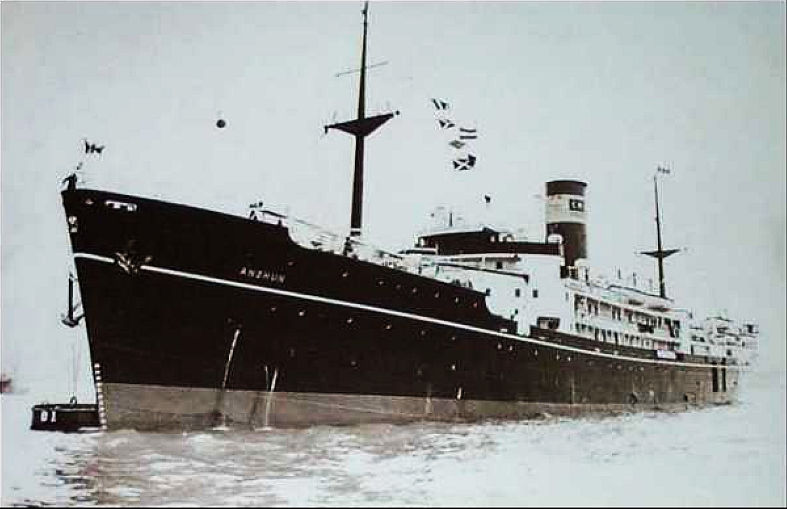
Specifications:
Built: Anking: Scotts Shipbuilding &
Engineering, Co
Anshun: Taikoo
Dockyard
Tonnage: 6,160 GRT.
Length: 418ft – 127.4m.
Breath: 57ft – 17.3m.
Propulsion: 4 cylinder Doxford Diesels – Anshun’s was built by Tailoo
HKG.
Screws: Single.
Service
speed: 15 knots.
Passengers: 50 First Class, 115 Steerage, as well
as deck passengers for short haul daylight coastal voyages.
Their Last days:
MS Anking was sold to the
Straits Steamship Company, Ltd who gave her a minor refit removing her two aft
upper lifeboats and renamed her Klias. She was placed on the following service:
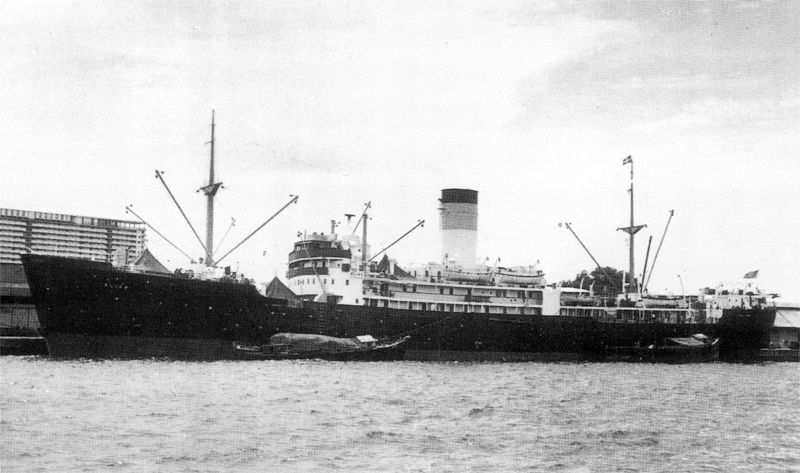
However in September 7, 1976, whilst the, MS
Klias was berthing in Singapore, due to obvious errors made on board, her aft
section smashed against the wharf so badly that her stern became simply became
impaled on the wharf. She was so severely damaged that it was not possible to
have her repaired economically, and thus the damage was patched up and she was
sold to
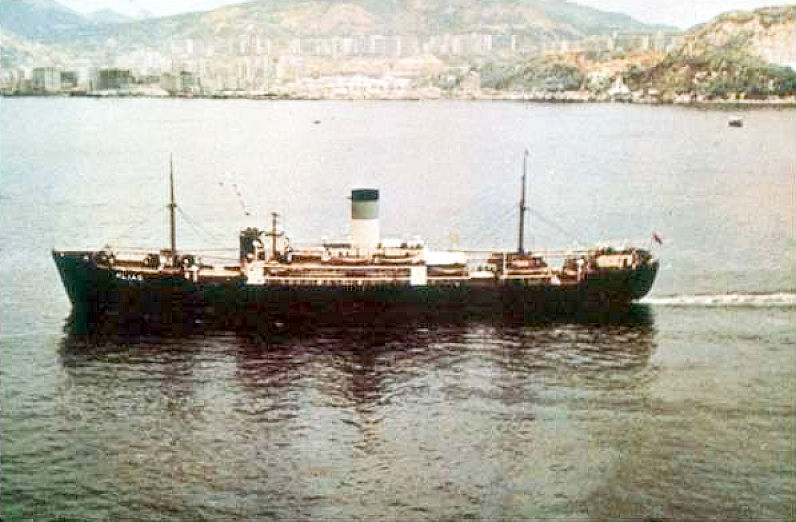
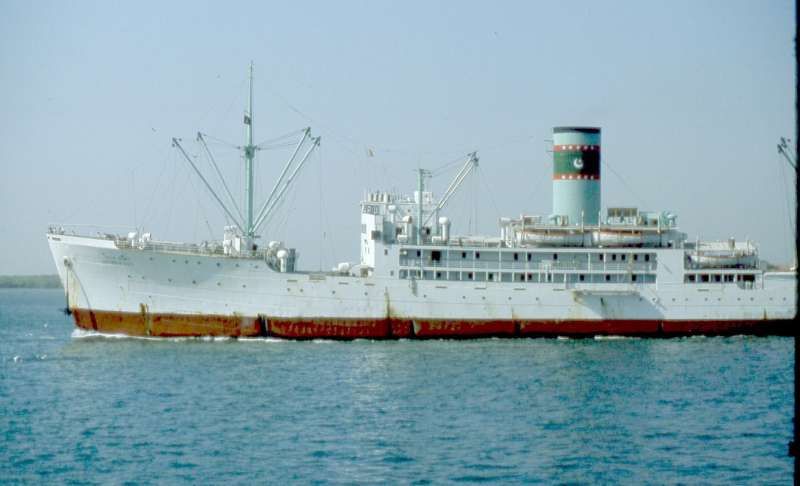
MS Changsha & Taiyuan – MS Kuala Lumpur
I watched them come, I watched them go and I watched them die.”
Where you will
discover around 680 Classic Passenger & Passenger-Cargo Liners!
ssMaritime.com & ssMaritime.net
Where the ships of the
past make history & the 1914 built MV Doulos Story
Please Note: ssmaritime and associated sites are 100% non-commercial and the
author does not seek funding or favours and never have and never will.
Photographs on ssmaritime and associate pages are either by the
author or from the author’s private collection. In addition there are
some images and photographs that have been provided by Shipping Companies or
private photographers or collectors. Credit is given to all contributors,
however, there are some photographs provided to me without details regarding
the photographer or owner concerned. Therefore, I hereby invite if owners of
these images would be so kind to make them-selves known to me (my email address
can be found at the bottom of the page on www.ssmaritime.com),
in order that due credit may be given.
ssMaritime is owned & © Copyright by Reuben
Goossens - All Rights Reserved
